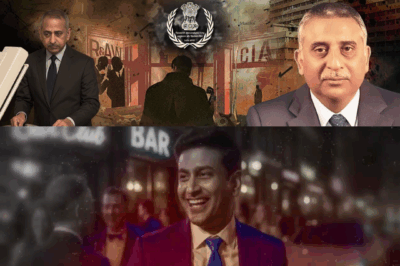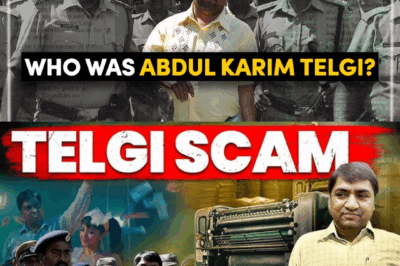The night was quiet over Ahmedabad in 1947 when a young man stood on the terrace of his home, staring at the stars. The air smelled of monsoon rain and revolution. India had just won her freedom — fragile, wounded, full of hope. Yet even as millions dreamed of building roads, schools, and industries, this man dreamed of something far stranger.
He dreamed of space.
His name was Vikram Ambalal Sarabhai, and what began on that terrace would someday carry the name of India beyond Earth itself.
The Dreamer in the Storm
Born into privilege in 1919, Vikram could have lived an easy life. His family was one of the most respected in Gujarat — industrialists, philanthropists, patrons of art and science. The Sarabhais lived in a sprawling estate that hosted thinkers like Mahatma Gandhi and Rabindranath Tagore. But Vikram was never content to simply inherit a legacy. He wanted to create one.
As a boy, he was obsessed with the stars. He would spend nights reading about Newton, Galileo, and the strange new field called “cosmic rays.” Teachers described him as gentle but intense, always lost in thought, his notebooks filled with questions rather than answers.
When he joined Cambridge University, he carried with him not just books, but a quiet belief — that India, though poor and colonized, was not intellectually inferior. He often said, “Our poverty is temporary. But our potential is infinite.”
Those words would become his guiding light.
The Vision Begins
When he returned to India after his studies, he came home to a country reborn yet broken. There were no satellites, no laboratories, not even proper science institutions outside a few universities. But Vikram didn’t see the lack; he saw the opportunity.
In 1947, he founded the Physical Research Laboratory (PRL) in Ahmedabad — not inside a grand building, but inside a small room in his family mansion. There was one table, a few instruments, and an unshakable dream.
Friends thought he was mad. India was struggling for food, power, and stability. Why talk about space when people didn’t even have enough to eat?
Vikram smiled whenever he heard that question. “Because,” he would say softly, “space is not a luxury. It is the next step for a civilization that believes in itself.”
The Spark That Lit a Nation
In the 1950s, the world was entering a new era — the Space Race between the United States and the Soviet Union. The world was watching rockets and satellites soar, and Sarabhai was watching, too — but not with envy. With determination.
He began writing letters to Indian scientists, government officials, and even Prime Minister Jawaharlal Nehru, arguing that India must build its own space program. At first, he was ignored. Then politely dismissed.
But he kept writing.
He met Nehru personally and convinced him that space research wasn’t just about prestige. It could help India monitor weather, improve agriculture, predict floods, and bring education to remote villages through communication satellites.
Nehru, a visionary himself, listened carefully — and approved the formation of a national space committee.
And thus, the seeds of ISRO — the Indian Space Research Organisation — were planted.
The Church That Became a Launchpad
The story of Indian space science didn’t begin in a state-of-the-art laboratory. It began in a church.
In 1962, Sarabhai chose a tiny fishing village called Thumba, near Thiruvananthapuram in Kerala, as the site for India’s first rocket launch station. The irony was poetic — a temple of faith turned into a temple of science.
The small St. Mary Magdalene Church became the office of the Indian National Committee for Space Research. The church’s prayer hall was converted into a workshop, and the Bishop’s house became the design center. Scientists cycled through sandy lanes, carrying rocket parts on their shoulders and sometimes in bullock carts.
When asked why he chose such a humble place, Sarabhai replied, “Great beginnings never require great buildings — only great minds.”
The First Rocket Launch
On a warm November evening in 1963, the Thumba Equatorial Rocket Launching Station saw history being made. A small, two-stage American rocket called Nike-Apache stood ready on a makeshift launchpad.
As the countdown began, Sarabhai stood with a group of young Indian scientists, many of them working with borrowed tools and second-hand equipment.
When the rocket roared into the sky, a cheer erupted. It wasn’t just a rocket. It was India’s leap into the cosmos.
Sarabhai watched silently, hands clasped, eyes glistening. Later, he would say, “It was not a rocket we launched. It was the spirit of a nation.”
The Father of ISRO
In 1969, ISRO was officially established, with Sarabhai as its first chairman. Under his leadership, space research in India evolved from an abstract idea into a structured national program.
He set clear goals — develop satellites for communication, remote sensing, and meteorology; train young scientists; and create technology that served the common man.
He never wanted space exploration to become a race of egos. “We do not have the fantasy of competing with economically advanced nations,” he said once. “But we are convinced that if we are to play a meaningful role nationally and in the community of nations, we must be second to none in the application of advanced technologies to the real problems of man and society.”
Every word carried purpose.
The Mentor and the Dreamer
Sarabhai was not just a scientist; he was a teacher, an artist, a humanist. He believed that science without compassion was empty. He personally mentored a generation of young scientists, among them A. P. J. Abdul Kalam — the man who would later become the “Missile Man” and President of India.
Kalam often said that Sarabhai didn’t just teach him physics — he taught him purpose.
Sarabhai would often tell his students, “Don’t look at what you have. Look at what you can create.”
He encouraged imagination as much as logic, art as much as engineering. He believed that progress came from harmony, not hierarchy.
A Scientist with a Soul
Beyond the laboratory, Sarabhai’s life was filled with art, music, and love. He married the legendary classical dancer Mrinalini Sarabhai, and together they became one of India’s most admired intellectual couples.
Their home was filled with discussions about science, art, and philosophy. Mrinalini once said, “Vikram didn’t just see stars in the sky — he saw rhythm, motion, and poetry in them.”
He also founded the Indian Institute of Management Ahmedabad (IIMA), the Community Science Centre, and the Nehru Foundation for Development — institutions that blended education with innovation.
He was building not just rockets, but minds.
The Challenges
But his journey was not easy. Bureaucracy, limited funding, and skepticism constantly threatened his mission.
There were moments when he felt crushed by pressure. Once, after a particularly difficult meeting where his proposal was rejected, he quietly told a colleague, “They think we are dreamers. But dreamers built the world.”
He never raised his voice, never fought for fame. His power was quiet — his persistence unstoppable.
The Final Night
On December 30, 1971, Vikram Sarabhai arrived in Kovalam, Kerala, for a meeting at the Thumba Rocket Launch Station. He worked late into the night, discussing satellite communication and the future of India’s space program.
In the early hours of December 31, he returned to his room to rest. He never woke up.
A heart attack took him away at the age of just 52.
The man who looked at the stars now belonged to them.
A Nation Mourns
When the news broke, shock spread across India. Scientists wept. Students cried. Prime Minister Indira Gandhi called him “one of the finest sons of India.”
At PRL, his team gathered in silence. One young researcher whispered, “He told us the sky was not the limit — now he’s proved it.”
His funeral was simple, as he would have wanted. No speeches, no banners. Just people who loved him standing under the same sky he had devoted his life to.
The Legacy
But death could not silence his vision. His protégé, Satish Dhawan, took over as the chairman of ISRO and continued Sarabhai’s mission.
In 1975, just four years after his passing, India launched its first satellite — Aryabhata. It was the moment Sarabhai had dreamed of. The world watched in astonishment as a developing nation entered the space age.
Every mission that followed — from the PSLV rockets to Chandrayaan and Mangalyaan — carried his invisible signature. His portrait still hangs in every ISRO office, a reminder of the man who started it all with a dream and a church.
Beyond Rockets
What made Vikram Sarabhai remarkable was not just his scientific genius but his humanity. He saw science as a way to serve people. He once said, “We must be clear that space technology is not for glamour. It must improve the life of the common man.”
He wanted satellites to bring education to rural schools, television to remote villages, and weather forecasts to farmers. To him, space was not escape — it was connection.
That vision continues to define India’s space program today.
The Forgotten Photographs
In the archives of PRL, there is a faded photograph of Sarabhai standing beside a group of young scientists. His eyes are calm, his hands in his pockets, his smile soft but assured.
Behind him, a blackboard reads in chalk: “We will reach the stars.”
He had written it himself.
The Eternal Teacher
Years later, when A. P. J. Abdul Kalam became President of India, he was asked who inspired him the most.
He replied, “Dr. Vikram Sarabhai. Because he made me believe that even the sky was not out of reach.”
Every rocket that leaves Indian soil carries a trace of that belief. Every success, every discovery, every milestone whispers his name.
Vikram Sarabhai didn’t just build an organization. He built a national identity — one that looked upward, with pride and purpose.
The Man Who Saw the Future
Today, more than five decades after his passing, India’s space program has touched the Moon, reached Mars, and inspired the world with its precision and affordability.
But none of it would have existed without the man who dared to dream when dreaming seemed impossible.
He didn’t live to see satellites orbit the Earth bearing India’s flag. But perhaps, somewhere in the night sky, he’s still watching — quietly smiling, the stars reflecting in his eyes.
The Final Words
Before his death, Sarabhai once wrote in his journal, “When I look at the stars, I don’t see distance. I see destiny.”
That line has been inscribed on a wall at ISRO’s headquarters. Visitors often stop and read it, unaware that those simple words built an empire of science and hope.
Because sometimes, it takes just one man — one dream — to lift an entire nation off the ground.
And for India, that man was Vikram Sarabhai.
News
The Man Who Sold India’s Secrets: Inside R&AW’s Biggest Betrayal
It began with silence.A silence so heavy it could crush even the most disciplined hearts inside India’s most secretive walls…
Telgi Scam: The Billion-Dollar Fraud That Shook India’s Legal System
In the dusty streets of Khanapur, a small town in Karnataka, a young fruit seller once stood beneath the harsh…
Natwarlal: The Conman Who Sold the Taj Mahal — Thrice!
He was not a gangster, not a killer, not even a man with an army. Yet his name sent shivers…
Bigg Boss 19 New Promo: Entire House Turns Against Malti During Explosive Task
The night began like any other inside the Bigg Boss 19 house. Laughter, teasing, and quiet strategy whispers filled the…
Bigg Boss 19 LIVE: Mitali Reads Tanya’s Palm and Reveals a Shocking Truth That Stuns the House
The night was quiet inside the Bigg Boss 19 house. The lights were dim, the laughter had faded, and the…
Bigg Boss 19 New Promo: Housemates Face Shocking Task as Experts Step In with Bold Advice
The lights dim, the siren blares, and the voice of Bigg Boss echoes through the house. “Time for the next…
End of content
No more pages to load












